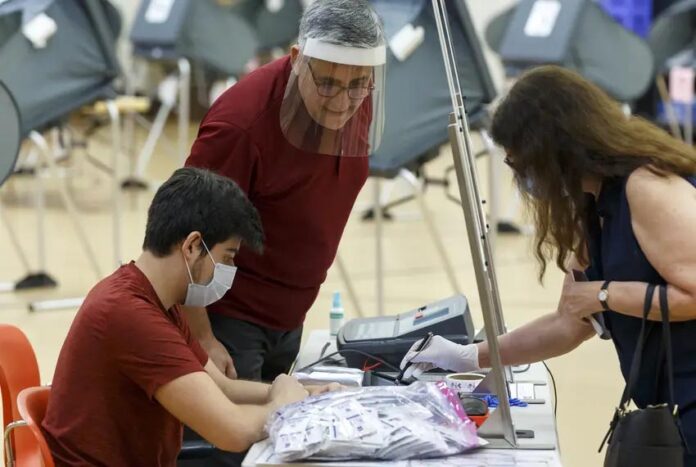By Matthew Watkins, Texas Tribune
Voter turnout under 6% may not seem like an achievement for democracy, but it made Texas Democrats optimistic Wednesday as they look to break Republicans’ statewide dominance this fall.
A total of 955,735 people — 5.8% of registered voters — cast ballots in Tuesday’s Democratic runoffs. That is more than double the amount of votes cast in the 2018 Democratic runoffs, when a race for governor was at the top of the ticket instead of a race for a U.S. Senate seat.
Party leaders said it was the highest raw number of votes cast in any Democratic primary runoff in Texas history. That’s in large part due to the growing electorate, however. Turnout for the 1994 Democratic runoffs, featuring a U.S. Senate race between Dallas millionaire Richard Fisher and former Attorney General Jim Mattox, was 8.3%, though the number of votes was 746,641.
Gilberto Hinojosa, chair of the Texas Democratic Party, said in a statement that the turnout “showed that Texas Democrats are fired up and are ready for change.”
“Texas is the biggest battleground state in the country,” he said. “There is unprecedented energy across our great state, and Texas Democrats are putting in the hard work to turn Texas blue in November. This is our moment.”
Republicans don’t appear threatened. Dave Carney, longtime political strategist for Gov. Greg Abbott, dismissed the numbers on Twitter as “not much to tweet about.”
“We have this same phony debate every two years,” he wrote. “It’s exhausting.”
Republicans didn’t have any statewide runoffs Tuesday night, so there was no comparable vote count available.
Turnout in runoffs can indeed be hard to evaluate. Often, the biggest influencer can be the nature of the races on the ballot. This year, the ballot was topped by a statewide race between retired Air Force pilot MJ Hegar and state Sen. Royce West, D-Dallas. (Hegar emerged victorious.) Other years, there are no statewide competitions.
But turnout hasn’t cracked 3% in a Democratic runoff in the past decade. And the party had reasons to suspect numbers would be lower. This election was in July, usually a sleepy month in politics. More so, voting took place in the middle of a pandemic. Democrats had sued state leaders in an attempt to expand the availability of mail-in voting, but those lawsuits failed.
“We are really thrilled with the turnout for this,” Hegar told reporters as results came in late Tuesday night. “A primary runoff electorate should be really small. This is a symptom of trouble coming for John Cornyn this general.”




